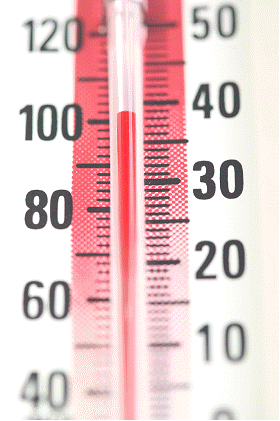Temperature
Do you want to know more?
Temperature
The hotness or coldness of a substance is called its temperature and is measured with a thermometer. The ordinary thermometer consists of a hollow glass bulb attached to a narrow stem with a thread-like bore. The bulb is filled with liquid, usually mercury, but also alcohol when very low temperatures need to be measured, which expands when the temperature rises and contracts when the temperature falls. The amount of expansion and contraction is measured by a calibrated scale.
Whilst thermometers are really measuring their own temperature, they are usually needed to measure the temperature of the surrounding air. To ensure that the temperature of the surrounding air is the same as the thermometer, it must be shaded from sunlight and be exposed to adequate ventilation. These conditions are provided by enclosing the thermometer within a white wooden box with louvered sides, called a Stevenson screen
Most temperature scales today are expressed in degrees Celsius (°C), although one will sometime see Fahrenheit (°F) in use, particularly in the United States. The Celsius scale is fixed by two points, the freezing and boiling point of water, which at normal atmospheric pressure are 0°C and 100°C respectively. The scale is then divided into 100 units. 0°C is equivalent to 32°F and 100°C to 212°F. The Kelvin temperature scale is the absolute temperature scale. Absolute zero, the coldest temperature possible in the universe is 0K or -273°C. Because one Kelvin is equivalent to one degree Celsius, 0°C is the same as 273K. 15°C is the same as 288K.
Special thermometers are used to indicate the maximum and minimum temperatures reached over a period, usually one day. For the amateur, a popular combined maximum and minimum thermometer is the U-shaped thermometer. Thermometers are also used to measure the temperature of the ground at night, which may fall several degrees below that of the air above, and to calculate the humidity of air.



